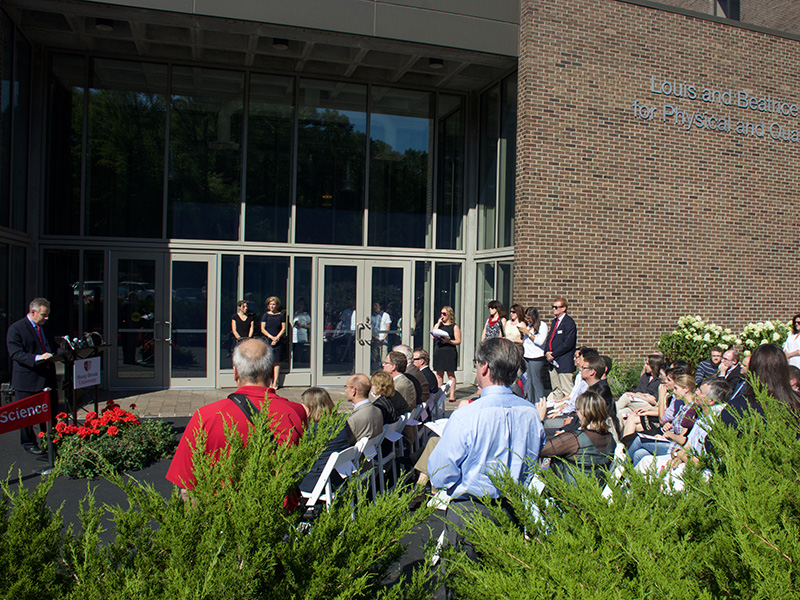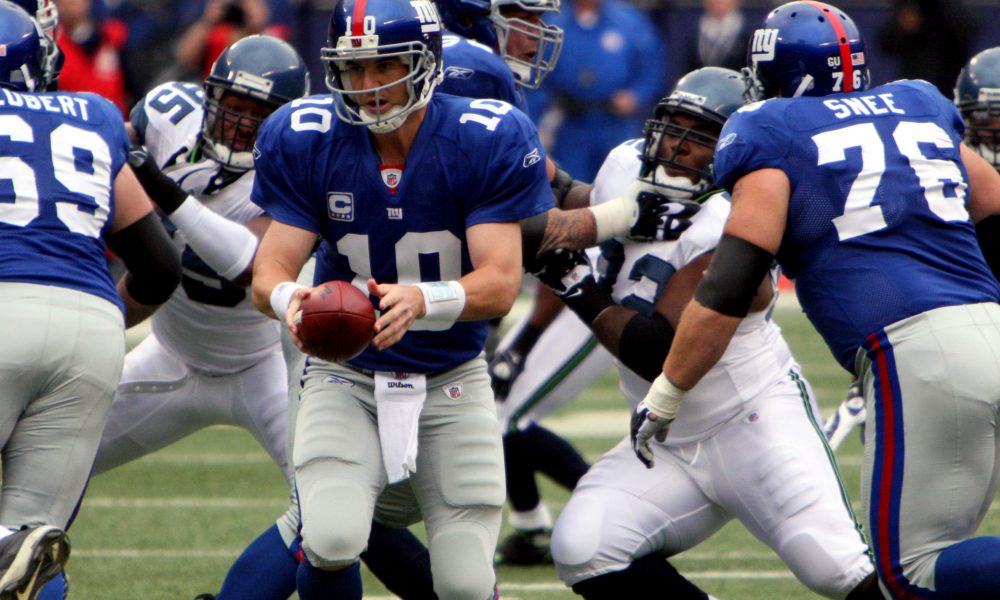Stony Brook University made a major move toward improving its programs with the grand opening of the Institute for Advanced Computational Science (ICAS).
Faculty, students and parents gathered on September 18 for a ceremonial ribbon cutting by President Samuel L. Stanley. After the ceremony, attendees were given a tour of the newly constructed building.
PhD student Daniel Elton, who studies physics, spent a lot of time understanding the light bending properties of water using computer simulation. Donald Willcox, another PhD student studying physics and astronomy, did his work on comparing different types of supernovae, the large release of energy that occurs when a star dies.
 The institute lists its mission as “…to make sustained advances in the fundamental techniques of computation and in high-impact applications, with a vision that by 2017 we will be an internationally recognized center having vibrant multidisciplinary research and education programs, and demonstrated economic benefit to New York State.”
The institute lists its mission as “…to make sustained advances in the fundamental techniques of computation and in high-impact applications, with a vision that by 2017 we will be an internationally recognized center having vibrant multidisciplinary research and education programs, and demonstrated economic benefit to New York State.”
President of the University Dr. Samuel L. Stanley Jr. spoke first after the introduction, where he praised the program for their initiatives, and he explicitly thanked the anonymous donors who donated 10 million dollars, which the Simons foundation matched, to help build the computational research facility.
“They’re really key to ensuring the growth and development of our students, our faculty and their ideas…So while respecting their request for privacy, I just want to say if they’re listening today, the anonymous donors, we thank you for investing in Stony Brook University,” President Stanley said.
The building has a ten-gigabit network with ten miles of network cable, and a high bandwidth network infrastructure that is capable of transferring a full DVD in four seconds and an entire Blu-Ray disc in twenty seconds. Supercomputers are a big part of what goes on at the Institute for Advanced Computational Science and gives students and faculty opportunities to make discoveries that they may never have made without this technology so readily available. Supercomputers can do things that regular computers simply cannot, such as decode the chemistry that underlies electric vehicle fuel cells or mining particle collisions, according to information distributed at the beginning of the ceremony.
The IACS also offers a new fellowship that provides qualifying students with $32,000 a year, in addition to $4,000 for travel and equipment expenses. Recipients also appear on the IACS website, in their publications, and get their work featured during IACS workshops and conferences.
Those eligible to apply are students pursuing graduate-level degrees in the disciplines of Physics, Applied Math, Computer Science, SOMAS, Geosciences, Sociology, Materials Science, Chemistry, Biomedical Informatics and Ecology and Evolution. Last year’s honored recipients of the IACS Junior Researchers Fellowship were Bryan Perozzi who studies computer science under Professor Steven Skiena, and Adam Jacobs, who studies Physics and Astronomy under the direction of Associate Professor Michael Zingale.
Founding Director of the IACS, Dr. Robert Harrison thanked everyone involved with the project, “So this really is a wonderful and exciting accumulation of over three years of work and hard work by very many people…To me, our students are at the heart of IACS, by now we’ve had over a hundred students pass through, and in a very real sense, IACS has just began. Perhaps more than our research, it is them as they go out into the world and change it and spread the word about IACS that will have the biggest impact,” Harrison said.




Comments are closed.